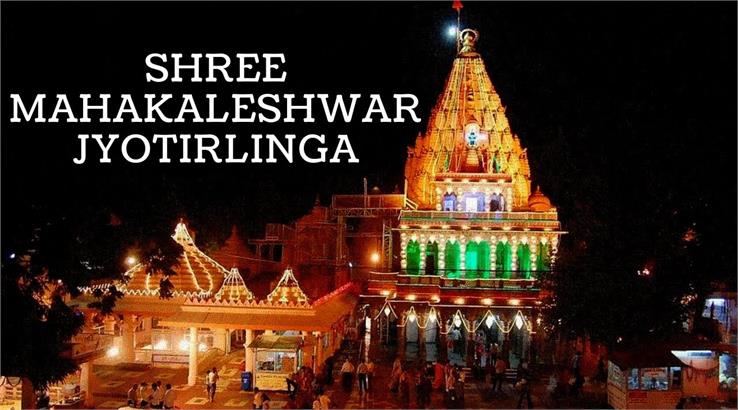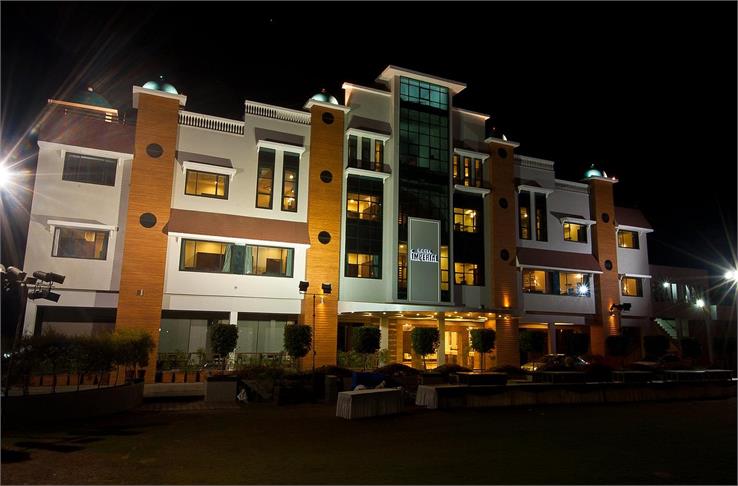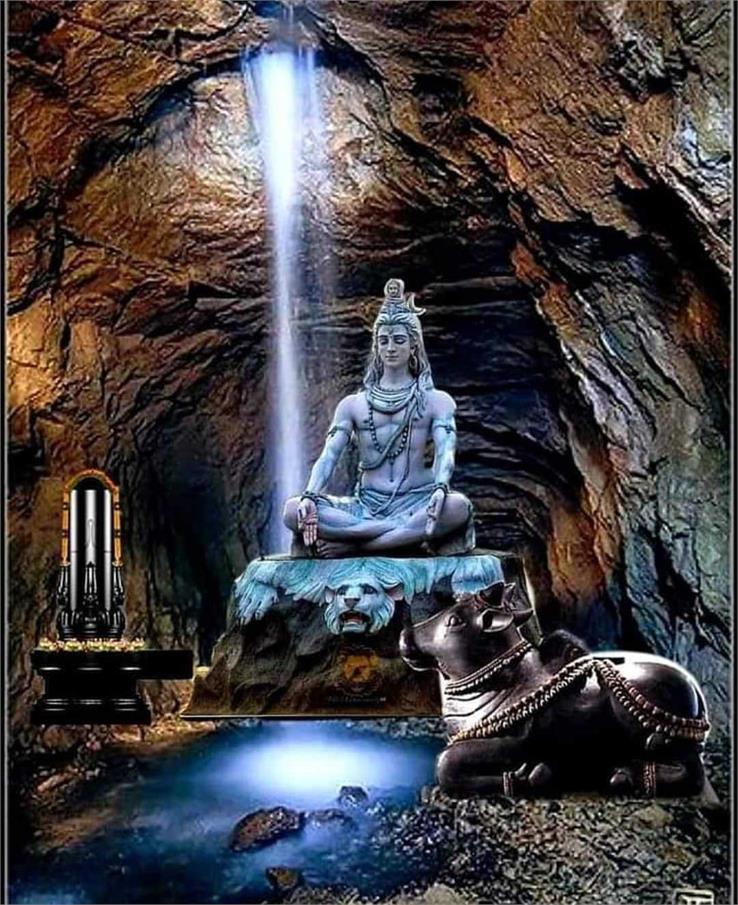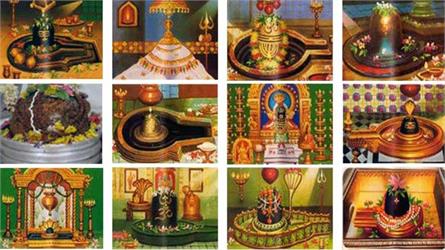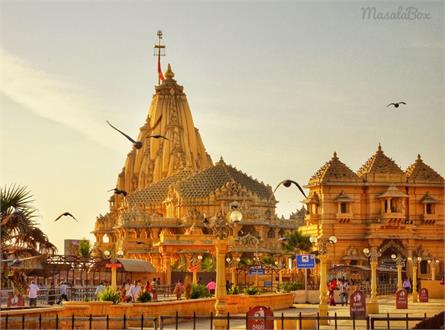Powerful Form of Lord Shiva - "Mahakaleshwar Jyotirlinga"
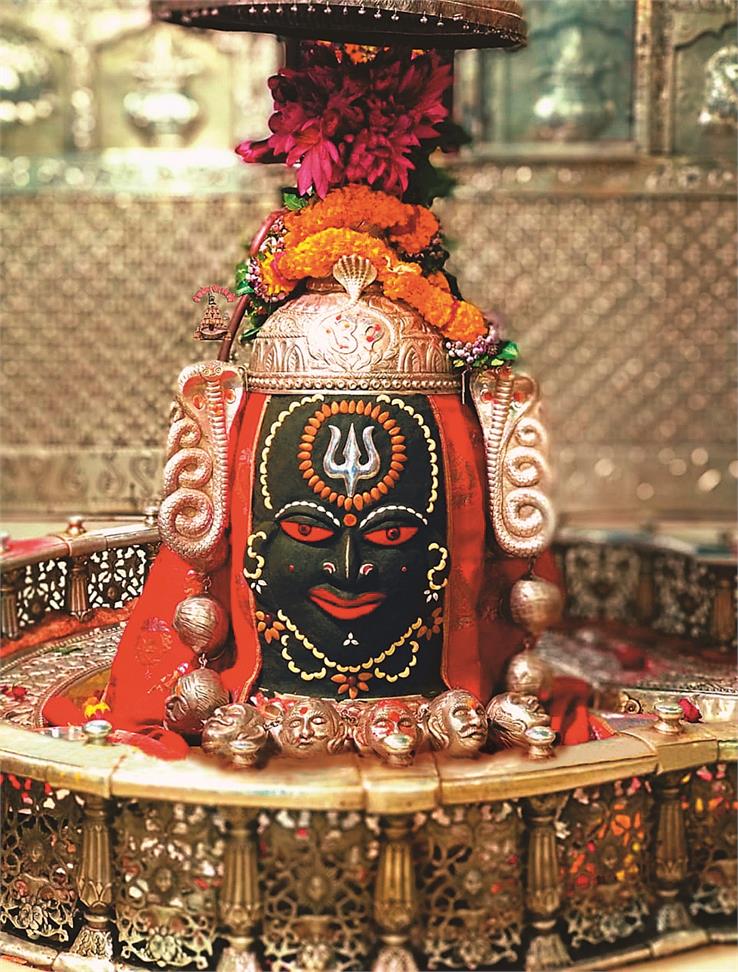
Mahakaleshwar Jyotirlinga, located in the ancient city of Ujjain, Madhya Pradesh, India, holds immense spiritual significance and is one of the twelve Jyotirlingas, the most revered Shiva temples in Hinduism. This magnificent temple stands as a testament to centuries of devotion and draws millions of pilgrims and devotees worldwide. Known for its rich mythology, architectural grandeur, and religious rituals, Mahakaleshwar Jyotirlinga is a sacred destination that offers a unique spiritual experience, allowing devotees to connect with the divine presence of Lord Shiva.
Also Read: The Story of Formation of Twelve Jyotirlinga
Historical Significance of Mahakaleshwar Temple
The historical significance of Mahakaleshwar Jyotirlinga has traced back to ancient texts and legends. Lord Shiva appeared as a Jyotirlinga to defeat evil and bless humanity. The Mahakaleshwar Jyotirlinga is said to be the divine manifestation of this powerful form of Lord Shiva.
Historically, the Mahakaleshwar Temple is in various ancient texts and inscriptions. The Paramaras, who ruled the region from the 9th to the 14th century, contributed to the development and patronage of the temple. The temple complex was expanded and renovated during their reign.
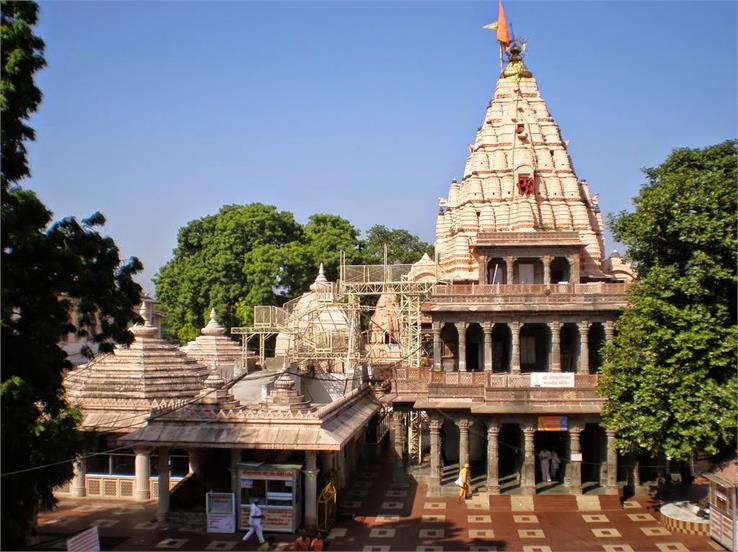
In the 13th century, Ujjain came under the rule of the Delhi Sultanate. During this period, the temple faced destruction and damage, with invaders targeting Hindu temples across the region. However, the temple was rebuilt and restored by subsequent rulers and devotees.
During the reign of the Marathas in the 18th century, the temple complex underwent significant reconstruction. The Scindias of Gwalior, who were Maratha rulers, played a vital role in the restoration and renovation of the temple. They contributed to the development of the grand structure that stands today.
In modern times, the Archaeological Survey of India (ASI) has taken initiatives to preserve and protect the temple complex. The ASI has undertaken various conservation projects to maintain the architectural integrity and historical significance of the Mahakaleshwar Temple.
Also Read: Somnath Jyotirlinga The Eternal Moonlit Abode of Lord Shiva
Mythology of Mahakaleshwar Temple
According to legend, a king named Maharaja Chandrasen ruled over Ujjain during ancient times. He and his subjects were devoted followers of Lord Shiva, and the worship of Lord Shiva was prevalent in the kingdom. Unfortunately, their peaceful existence disrupts when a neighbouring king named Ripudaman attacks Chandrasen's palace. To make matters worse, a demon named Dushan emerged and began tormenting the people of Ujjain.
Overwhelmed by the demon's atrocities, the distressed people turned to Lord Shiva with utmost devotion and enthusiasm. Moved by their prayers and the sincerity of their faith, Lord Shiva manifested himself as Mahakal by tearing through the Earth's surface. In this formidable form, he annihilated the demon, ending the people's suffering.
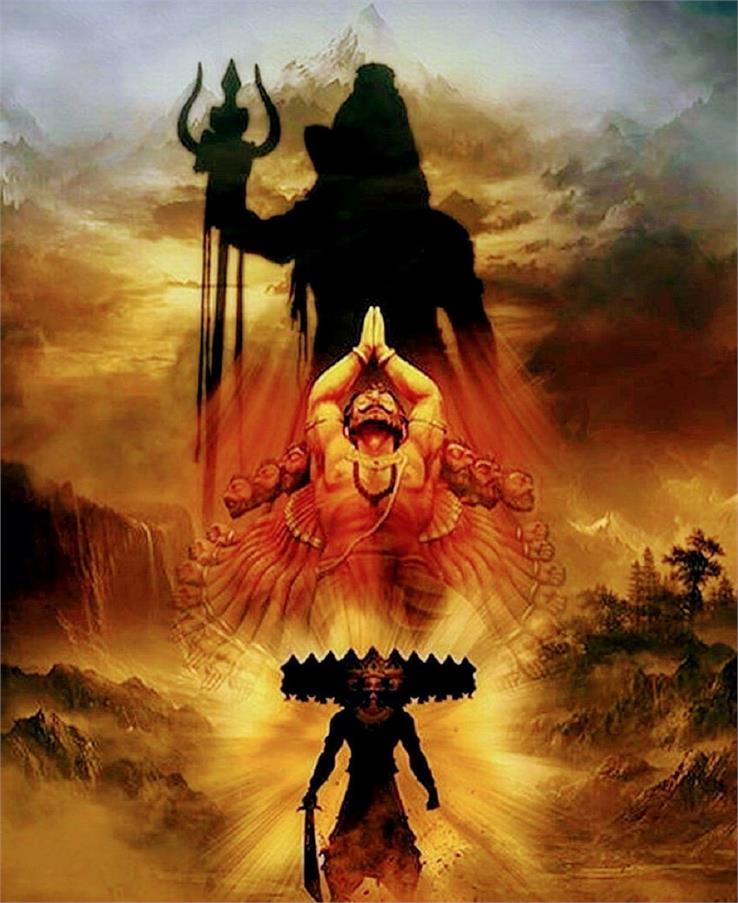
Impressed by the unwavering devotion of the people of Ujjain and their heartfelt pleas, Lord Shiva decided to reside permanently in the city as a Jyotirlinga, a sacred representation of his divine presence. Thus, the Mahakaleshwar Jyotirlinga came into existence, symbolizing the eternal presence of Lord Shiva in Ujjain.
Deeply ingrained, the divine event in the history and mythology associated with the Mahakaleshwar Temple is a testament to the enduring faith and devotion of the devotees who continue to worship Lord Shiva at this sacred site.
People who are afraid of untimely death should visit Mahakaleshwar Jyotirlinga. The grace of Mahakal also averts untimely death. Shiva Purana describes the legend of Mahakaleshwar Jyotirlinga. It also describes even death cannot harm the one who Mahakal blesses.
Also Read: Mallikarjuna Jyotirlinga The Sacred Confluence of Divinity and Devotion
Architectural Splendor
The architecture of Mahakaleshwar Jyotirlinga is a marvel in itself. The temple complex showcases Rajput and Maratha architectural styles, with exquisite carvings and intricate sculptures adorning its walls and pillars. The spire, or shikhara, of the temple, stands tall, reaching towards the heavens, symbolizing the connection between the earthly and the divine realms.
The temple complex encompasses several mandapas (halls) and shrines dedicated to various deities. The main sanctum sanctorum houses the lingam, the representation of Lord Shiva, which is the central focus of devotion. The idol of Mahakaleshwar is considered self-manifested and worshipped with great reverence.
The temple complex also features a massive courtyard and a large water tank, known as the Kunda, which believes to be filled with holy water from the sacred river Ganges. Devotees often dip in the Kunda before entering the temple, as it purifies the soul.
Also Read: Best Hotels In Ujjain Near Mahakaleshwar Temple
When was Ujjain Mahakal Established?
According to religious beliefs, the Mahakaleshwar temple establishes in Ujjain eight generations ago by Nand ji in the Dwapar era. According to mythology, this temple is over 800 to 1000 years old. King Vikramaditya expanded this temple, whereas the present Mahakal temple was built 150 years ago by Ramchandra Baba Shen Bi, the accountant of Ranoji Scindia.
Legend of Mahakaleshwar Jyotirlinga
In the ancient city of Ujjayini, a king named Chandrasen was a devoted follower of Lord Shiva. He had formed a friendship with Manibhadra, one of Lord Shiva's loyal attendants. One day, Manibhadra gifted the king an invaluable gem called Chintamani, which gave Chandrasen immense power and influence. The king's fame and reputation spread far and wide, arousing the envy of other kings who desired the gem for themselves.
Several kings attacked Chandrasen's kingdom, forcing him to flee and seek refuge in the abode of Lord Mahakal, where he immersed himself in intense penance. During this time, a widow named Gopi arrived at the sacred place with her five-year-old son. Inspired by the king's devotion to Lord Shiva, the child also began worshipping the Shivlinga with great dedication. So profoundly absorbed was the child in his worship that he couldn't hear his mother calling out to him for food.
Also Read: Kedarnath Jyotirlinga The Majestic Gateway to Spiritual Liberation
Growing frustrated with her son's apparent disregard, Gopi angrily approached him and began to scold and beat him, causing the worship materials to be scattered. His mother's actions deeply saddened the child. Miraculously, by the grace of Lord Shiva, a magnificent temple materialized at the spot, housing the divine Shivlinga and the offerings made by the child. Thus, the Mahakaleshwar Jyotirlinga came into existence.
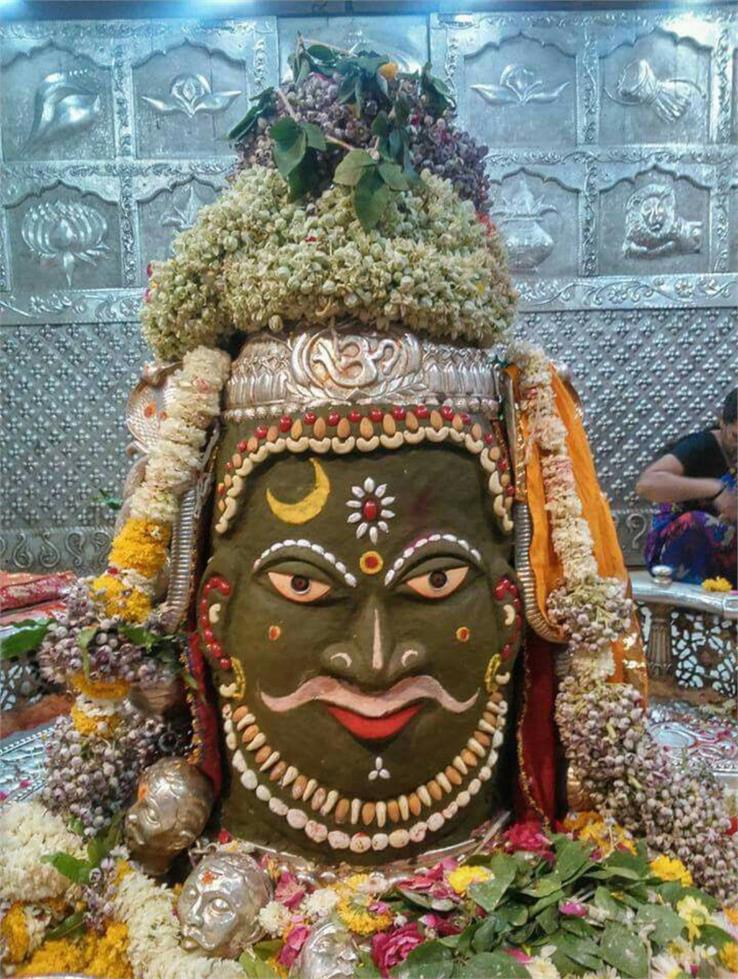
The child's mother was astounded by this extraordinary occurrence. When King Chandrasen learned of this divine event, he, too, arrived at the temple to witness the Mahakaleshwar Jyotirlinga. The kings who had sought to possess the gem abandoned their pursuit and sought refuge in the protective shelter of Lord Mahakal.
From that point onward, Lord Mahakal made Ujjayini his abode. The legend of the Mahakaleshwar Jyotirlinga narrates how this sacred site came into being, highlighting the transformative power of devotion and the divine protection bestowed upon those seeking the shelter of Lord Shiva.
Religious Significance and Rituals
Devotees regard Mahakaleshwar Jyotirlinga as one of India's most potent and spiritually charged Shiva temples. It attracts devotees from all walks of life who seek blessings, spiritual solace, and liberation from the cycle of birth and death. Devotees believe that the temple fulfils the desire of everyone and provides them with divine protection.
The priests at Mahakaleshwar Jyotirlinga conduct the daily rituals with great precision and devotion. The day begins with the Bhasma Aarti, where sacred ash is applied to the lingam while chanting hymns and mantras. The temple resonates with the sounds of bells, conches, and the rhythmic chants of devotees, creating an atmosphere charged with devotion.
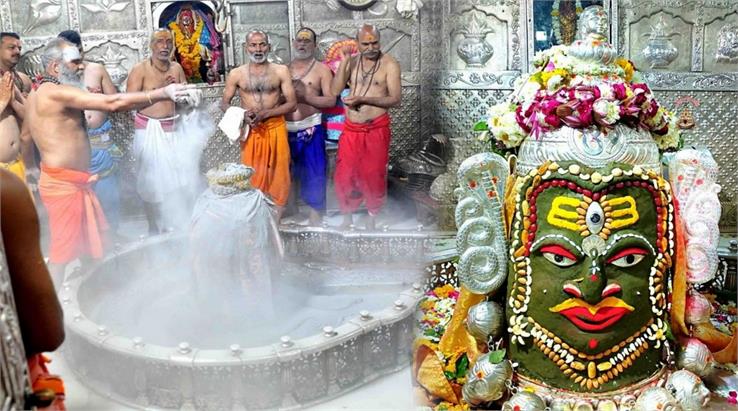
The most significant ritual at Mahakaleshwar Jyotirlinga is the Bhasma Aarti held every morning at 4:00 a.m. This unique ritual involves offering sacred ash to the deity, symbolizing the transient nature of human existence and the ultimate truth of death. The Bhasma Aarti is a sight as devotees gather to witness this divine spectacle, seeking blessings and enlightenment.
The Maha Shivaratri festival holds immense importance, drawing many devotees who observe night-long vigils, fasting, and devotional singing to honour Lord Shiva.
Mahakaleshwar Temple Timing
The Mahakaleshwar Temple in Ujjain follows specific timings for devotees to visit and seek blessings. The temple has different timings for various rituals and darshans (viewing of the deity). Here are the available timings for the Mahakaleshwar Temple:
|
Morning |
Bhasma Aarti |
The Mahakaleshwar temple gates open early in the morning for the unique Bhasma Aarti, performed from around 4:00 a.m. to 6:00 a.m. It is a special ritual where the Linga is covered with sacred ashes (bhasma), and devotees can witness the divine sight. |
|
Daytime |
1. General Darshan |
After the Bhasma Aarti, the Mahakaleshwar temple remains open for general darshan from 6:00 a.m. to 7:00 a.m. |
|
2. Morning Pooja |
Morning pooja and rituals occur from 7:00 a.m. to 7:30 a.m. |
|
|
Afternoon |
General Darshan |
The Mahakaleshwar temple reopens for devotees in the afternoon from 11:00 a.m. to 4:00 p.m. for general darshan. |
|
Evening |
1. Evening Pooja |
Special evening poojas and rituals are performed from 5:00 p.m. to 6:00 p.m. |
|
2. Sandhya Aarti |
The Sandhya Aarti, a significant ritual, is performed in the evening from around 7:00 p.m. to 7:30 p.m. It is captivating as devotees gather to witness the Aarti and offer their prayers. |
|
|
Night |
Shayan Aarti |
The Mahakaleshwar temple doors close after the Shayan Aarti, which is performed from around 10:00 p.m. to 10:30 p.m. It marks the final Aarti of the day before the temple closes for the night. |
Interesting Facts about Mahakaleshwar Temple
1. The Mahakaleshwar Temple is known for its Tatva Bhasma Aarti, a tradition since the establishment of the Shivlinga. King Chandrasen, a devoted worshipper of Shiva, is associated with this practice.
2. Instead of using ashes from the crematorium, the ashes for the Bhasma Aarti are prepared by burning cow dung from Kapila cows, along with leaves from Shami, Peepal, Bad, Palash, Ber, and Amaltas trees. This ritual holds significant importance as prescribed in the scriptures. The Aarti takes place every morning before dawn, at 4 a.m., with the offering of Bhasma while chanting mantras.
3. An intriguing and mysterious belief is associated with the Mahakaleshwar Jyotirlinga. It is believed that no king or minister can spend a night near the temple or in Ujjain. Those who do so are said to face severe consequences and punishments. The king of Ujjain is believed to be none other than Mahakal himself. Historical examples support this belief, such as the downfall of a former Prime Minister who spent a night at the temple.
4. The vast Mahakaleshwar Temple complex houses numerous temples dedicated to various deities. To reach the sanctum sanctorum, visitors have to traverse a path from the main gate. The complex features well-laid concrete pathways and a staircase leading to the sanctum sanctorum.
Also Read: Kaal Bhairav Ujjain Where Scientists Fail To Know The Secret
5. Within the temple complex is an ancient tank where Mahakaleshwar Jyotirlinga is present. Taking a bath in this sacred tank is believed to purify one from sins and relieve one of life's difficulties. According to spiritual beliefs and scholarly opinions, it is considered the centre point and navel of the Earth, where Mahakal governs the entire creation.
6. The temple complex is divided into three sections. The lower part of the complex has dedicated to Mahakaleshwar, the middle part to Omkareshwar, and the upper part to Sri Nagachandreshwar Temple. The colossal Shivling of Lord Mahakaleshwar, situated in the sanctum sanctorum, faces the south, earning it the name Dakshinmukhi Shivling, which holds special significance in astrology.
7. Inside the sanctum sanctorum, one can witness the beautiful idols of Mother Parvati, Lord Ganesha, and Kartikeya. A perpetual lamp, known as the river lamp, always remains lit in the sanctum sanctorum.
8. The notable attractions of the Mahakaleshwar Temple include the Bhasma Aarti of Lord Mahakal, the Nagchandreshwar Temple, and the fantastic royal ride of Lord Mahakal. Advanced booking is necessary to participate in the Bhasma Aarti. Ujjaini City also has temples dedicated to Harsiddhi, Kalabhairav, and Vikrantbhaivar.
9. The Mahakaleshwar Temple hosts the Kumbh Mela, the largest fair held every 12 years, which attracts sages, saints, and devotees from across the country and abroad, creating a massive congregation.
10. The ancient Nageshwar Temple in Ujjain, associated with Mahakaleshwar, is opened for devotees only once a year, specifically on the occasion of Nagpanchami. Additionally, the fantastic royal ride of Lord Mahakal takes place during the month of Shravan.
11. Devotees visit Ujjain on every Somvati Amavas (New Moon on a Monday) for the holy Salila Shipra Snan (bathing in the Shipra River), special darshan (sight), worship, and Rudrabhishek (ritual offering) to the Mahakaleshwar Jyotirlinga. This practice continues from the fifth day of the Phagun Paksha (Hindu lunar month) until the Navratri festival.
Best Time to Visit Mahakaleshwar Temple
Choosing the best time to visit the Mahakaleshwar Temple is crucial for a fulfilling and spiritually uplifting experience. Whether you prefer the pleasant weather of winter, the festive fervor of Mahashivratri, or the serenity of the monsoon season, each period offers its unique charm.
1. Winter Season (October to February)
The winter season is an excellent time to visit the Mahakaleshwar Temple. The months of October to February offer a pleasant climate with temperatures ranging from 10°C to 25°C (50°F to 77°F). Devotees can comfortably explore the temple complex and engage in rituals without the discomfort of extreme heat. The winter months also witness several festivals, including Navratri and Shivratri, when the temple is adorned with vibrant decorations, and special prayers and rituals are performed.
2. Mahashivratri
Mahashivratri, one of the most significant festivals dedicated to Lord Shiva, is an ideal time to visit the Mahakaleshwar Temple. Falling in either February or March, this auspicious occasion attracts devotees from all over the country. The temple is beautifully decorated, and elaborate rituals and ceremonies take place throughout the day and night. Participating in the Maha Aarti and witnessing the grand procession of Lord Shiva is a mesmerizing experience.
3. Monsoon Season (July to September)
For those who enjoy the beauty of rain-drenched surroundings, the monsoon season presents a unique charm at the Mahakaleshwar Temple. The lush greenery, cool weather, and occasional showers add a serene and refreshing ambiance to the temple premises. However, it is essential to check weather conditions and road accessibility, as heavy rains may sometimes disrupt travel plans.
4. Shravan Month
The holy month of Shravan (July to August) holds immense significance for Lord Shiva's devotees. Devotees undertake Kanwar Yatra, carrying holy water from the River Ganges, and offer it to Lord Shiva at the Mahakaleshwar Temple. The temple witnesses a significant influx of pilgrims during this period, creating a vibrant and spiritually charged atmosphere.
5. Regular Weekdays
If you prefer a less crowded and serene atmosphere, visiting the Mahakaleshwar Temple on regular weekdays outside major festivals and auspicious occasions can be a good option. During these times, devotees can peacefully engage in prayers and rituals, experiencing a more intimate connection with the divine.
How to Reach Mahakaleshwar Temple
To reach Ujjain, you can choose from various modes of transportation depending on your location and preferences. Here are the different ways to get Ujjain:
1. By Air
The nearest airport to Ujjain is Devi Ahilya Bai Holkar Airport in Indore, approximately 55 kilometres away. You can hire a taxi or take a bus from the airport to Ujjain after landing. Regular flights connect Indore with major cities across India, making it a convenient option for domestic and international travellers.
2. By Train
Ujjain Junction railway station is well-connected to major cities in India. Trains from Delhi, Mumbai, Kolkata, and Chennai have direct routes to Ujjain. Once you arrive at the station, you can book a taxi to reach the Mahakaleshwar Temple, approximately 3 kilometres away.
3. By Road
Ujjain has excellent road connectivity, making it easily accessible by Road. National Highway 3 (NH3) and National Highway 59 (NH59) pass through the city, connecting it to major cities like Indore, Bhopal, and Ahmedabad. State-run buses, private buses, and taxis are available for travel to Ujjain from neighbouring towns and states.
4. Local Transportation
Ujjain has a well-developed local transportation system that makes exploring the city convenient and reaching the Mahakaleshwar Temple. Auto-rickshaws and cycle rickshaws are popular modes of transportation for shorter distances. You can also hire taxis for more comfort and convenience. Many hotels and guesthouses also offer transportation services for their guests.


